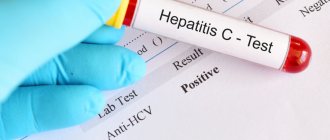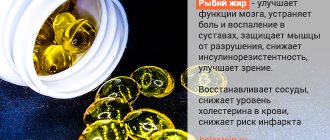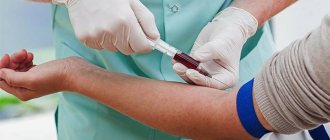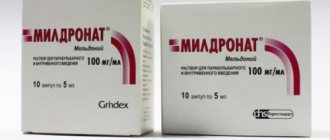Antiarrhythmic drugs are a large and diverse group of drugs that eliminate heart rhythm disturbances and are used for arrhythmias.
An important feature of antiarrhythmic drugs is their highly targeted action - they specifically affect the conduction system of the heart.
The heart consists of two types of cells - cardiomyocytes: typical and atypical (atypical).
Typical cardiomyocytes in structure and function are ordinary muscle cells that are capable of contracting, thereby ensuring the pumping function of the heart and the movement of blood through the vessels. The heart contracts under the influence of bioelectric impulses.
Atypical cardiomyocytes, in structure and function, are more reminiscent of nerve cells capable of reproducing and transmitting electrical impulses. Atypical cardiomyocytes constitute the conduction system of the heart, ensuring uniform impulse conduction throughout the heart, as well as the ability to autonomously reproduce and maintain this impulse when necessary. It is these processes that determine the normal (measured) rhythm of heart contractions.
The bioelectric impulse is generated and conducted through the heart due to the currents of sodium, potassium and calcium ions, as well as the work of β-adrenergic receptors.
The conduction system permeates the entire heart and consists of the following main parts: the sinus (sinoatrial) node, the atrioventricular node, internodal conduction bundles, the His bundle and Purkinje fibers.
Each section of the conduction system is responsible for the sequential contraction of certain parts of the heart - the atria, interventricular septum and ventricles. Violation of the conduction of excitation in any part of the conduction system of the heart leads to the development of arrhythmias.
Clinical features and treatment tactics for arrhythmias depend to the greatest extent on the area of the conduction system where the conduction of the bioelectric impulse is regularly disrupted.
Depending on the mechanism of action, as well as the characteristics of the effect on certain rhythm disorders, all antiarrhythmic drugs are divided into 4 main classes: sodium channel blockers (class I), β-adrenergic receptor blockers (class II), potassium channel blockers (class III), blockers calcium channels (class IV).
Let us consider in detail class I antiarrhythmic drugs - sodium channel blockers or membrane stabilizers.
Basics of treatment with class I antiarrhythmic drugs
Considering certain features and difficulties in selecting an individual dose and a specific drug, as well as a wide range of side effects and interactions with other drugs, any antiarrhythmic drugs are prescribed only by an experienced cardiologist.
Class I antiarrhythmic drugs are used for a long time, most often for life.
Cancellation, dose adjustment or replacement of a class I antiarrhythmic drug should be carried out only by a physician and under the supervision of a physician, since there is a risk of developing serious cardiac arrhythmias.
Antiarrhythmic drugs
The main method of treating arrhythmias is the use of antiarrhythmic drugs (AAP). Although they do not “cure” arrhythmias, they can reduce or suppress arrhythmic activity and prevent recurrence of arrhythmias.
AAP classification. The most widely known classification of AAP, proposed by EM Vaughan Williams (1969; 1984) and supplemented by D. Harrison (1979):
Class I - sodium channel blockers;
Class II - β-adrenergic receptor blockers;
Class III - drugs that increase the duration of the action potential and myocardial refractoriness (potassium channel blockers);
Class IV - calcium channel blockers.
The vast majority of AAPs belong to class I. According to the proposal of D. Harrison (1979), class I drugs were further divided into three subclasses: IA, IB and IC (Table 1).
All class I drugs slow down the rate of depolarization and conduction velocity in the myocardium of the atria and ventricles. This effect is most clearly expressed in class IC AAP. Class IB drugs have a minimal effect on the rate of depolarization, and class IA AAPs occupy an intermediate position. At the same time, class IA AAPs slow down repolarization - they increase the duration of the action potential and the effective refractory period, class IB drugs can slightly accelerate repolarization, and class IC AAPs have almost no effect on the process of myocardial repolarization (although they lengthen the effective refractory period of the atria at a high frequency of atrial contractions, for example, with atrial fibrillation). Thus, the action of class I drugs is distinguished by speed:
IA - moderate slowing of the rate of depolarization and repolarization;
IB - minimal deceleration of depolarization rate and acceleration of repolarization;
IC—maximum deceleration of depolarization rate and minimal effect on repolarization.
On the electrocardiogram (ECG), a slowing of the rate of depolarization is manifested as widening of the P wave and the QRS complex. Slowing of ventricular repolarization on the ECG manifests itself as a prolongation of the QT interval.
The classification of AARP by EM Vaughan Williams, even in its modern modification, has significant drawbacks. The effect of AAP in the whole organism is often noticeably different from the effect on myocardial cells identified experimentally: various pathological conditions significantly change the electrophysiological properties of the myocardium and the nature of the effect of AAP; many drugs exhibit the properties of several or even all classes at the same time. Therefore, repeated attempts have been made to supplement and revise the classification of AAP, to create new classifications based on theoretical developments, data from experimental and clinical studies, and practical experience in the treatment of arrhythmias.
One of the attempts to create a more advanced AAP classification is the so-called “Sicilian Gambit”. Leading experts on arrhythmias gathered in Sicily and made an attempt to bring together data from theoretical, experimental and clinical studies, the entire range of knowledge about the mechanisms of arrhythmias and the action of AAP. They called their report “The Sicilian Gambit” (Sicily, 1990), by analogy with the “Queen's Gambit” in chess, the use of which provides the chess player with “a wide choice of aggressive actions.” It was truly a brainstorming session on the problem of treating arrhythmias. This report is an excellent systematic review of modern ideas about the electrophysiology of the heart, the mechanisms of arrhythmias and the action of AAP.
“The Sicilian Gambit” summarizes and systematizes all the information collected to date on the action of AAP (including at the cellular and subcellular levels). Each AAP has its own place - taking into account all the features of its action.
However, the “Sicilian Gambit” has no practical significance, since the authors of the “Sicilian Gambit” only systematized the terms and definitions in already known treatment schemes. When attempting to use the provisions of the “Sicilian Gambit” in practical work, an illusion of certainty is created where there is none. The new approach is aimed at increasing the effectiveness of further scientific research on the problem of cardiac arrhythmias and may contribute to the understanding of various aspects of the problem of drug treatment of arrhythmias, as well as facilitate the teaching of materials on arrhythmias to students or doctors who want to become arrhythmologists. The famous arrhythmologist RN Fogoros (1997) defined the role of the Sicilian Gambit as follows: “It cannot be said that the Sicilian Gambit is unsuitable for practice. Once the mechanisms of arrhythmias are more clearly defined, knowledge of the specific properties of certain drugs can help predict the effectiveness of pharmacological therapy (which is the goal of the authors of the Sicilian Gambit). Moreover, such a tabular system is certainly useful for research... The Vaughan Williams system (with all its limitations) is still the most useful means of classifying antiarrhythmic drugs."
Undesirable effects of AAP. Any action of AAP can cause both antiarrhythmic and arrhythmogenic effects. The probability of an antiarrhythmic effect for most drugs averages 40–60%. The exception is amiodarone, whose effectiveness reaches 70–80%, even in the absence of effect from other AAPs. The probability of an arrhythmogenic effect is on average about 10%, and for class IC drugs it reaches 20% or more. In this case, the arrhythmogenic effect can manifest itself in the form of life-threatening arrhythmias. In severe ventricular arrhythmias in patients with severe organic heart disease, the likelihood of an arrhythmogenic effect may exceed the likelihood of an antiarrhythmic effect.
Several large clinical studies have revealed a significant increase in overall mortality and the incidence of sudden death (2-3 times or more) in patients with organic heart disease (post-infarction cardiosclerosis, cardiac hypertrophy or dilatation) while taking class I AAP, despite effective elimination arrhythmias. The most famous work, which for the first time revealed a complete discrepancy between the clinical effectiveness of drugs and their effect on prognosis, is the Cardiac Arrhythmia Suppression Trial (CAST). The effect of three AAPs was studied: flecainide, encainide and moricizine (ethmosine). At the interim analysis, a sharp increase in overall mortality and the incidence of sudden death (2.5 and 3.6 times, respectively) was found among patients taking flecainide and encainide, despite the effective elimination of ventricular premature beats. Subsequently, an increase in mortality was also detected when taking moricizine (CAST-II). The results of the CAST study forced us to reconsider treatment tactics not only for patients with cardiac arrhythmias, but also for cardiac patients in general. The CAST study played perhaps the main role in the development of evidence-based medicine.
The only AAPs associated with a reduction in mortality are β-blockers and amiodarone. Therefore, beta-blockers and amiodarone are currently the drugs of choice for the treatment of arrhythmias in patients with organic heart disease.
All AAPs have unwanted side effects. As a rule, their frequency and severity depend on the dose of the drug. A detailed list of side effects of AAP takes up several dozen pages. A list of side effects of each AAP is given in the annotations for the drugs.
The high frequency of arrhythmogenic effects and side effects of AAP allows us to propose the following as one of the basic principles for the treatment of arrhythmias: “Avoid the use of antiarrhythmic drugs whenever possible” (RF Fogoros, 1997).
AAPs used for intravenous administration and recommended daily doses are shown in Table 2, for oral administration - in Table 3.
Brief characteristics of the AAP. Of the class I AAPs, four drugs are mainly used in Russia: quinidine (kinidin durules), allapinin, etatsizin and propafenone (ritmonorm, propanorm). These drugs have approximately the same effectiveness and tolerability. In addition to these class I drugs, intravenous administration of novocainamide and lidocaine is used in emergency situations.
After the CAST study and the publication of the results of a meta-analysis of studies on the use of class I AAPs, which showed that almost all class I AAPs are able to increase mortality in patients with organic heart disease, β-blockers have become the most popular AAPs.
The antiarrhythmic effect of beta-blockers is due precisely to the blockade of beta-adrenergic receptors, i.e., a decrease in sympathetic-adrenal effects on the heart. Therefore, β-blockers are most effective for arrhythmias associated with sympathetic-adrenal influences - the so-called catecholamine-dependent, or adrenergic, arrhythmias. Their occurrence is usually associated with physical activity or psycho-emotional stress.
β-blockers are the drugs of choice for the treatment of arrhythmias in congenital long QT syndromes.
For arrhythmias not associated with activation of the sympathetic nervous system, β-blockers are much less effective, but their addition to the treatment regimen often significantly increases the effectiveness of other AAPs and reduces the risk of the arrhythmogenic effect of class I AAPs. Class I drugs in combination with β-blockers do not increase mortality in patients with organic heart disease (CAST study).
Doses of β-blockers are adjusted according to their antiarrhythmic effect. An additional criterion for sufficient β-blockade is a decrease in heart rate (HR) to 50/min.
The original drug is amiodarone. It has the properties of all four classes of AAP and, in addition, has a moderate α-blocking and antioxidant effect. Amiodarone is undoubtedly the most effective AAP available. It is even called an “arrhythmolytic drug.” However, the attitude of cardiologists towards amiodarone from the very beginning of its use for the treatment of arrhythmias caused the greatest disagreement. Due to the high incidence of extracardiac side effects, amiodarone was considered a reserve drug for quite a long time: it was recommended to use it only for life-threatening arrhythmias and only in the absence of effect from all other AAPs (LN Horowitz, J. Morganroth, 1978; JW Mason, 1987; JC Somberg , 1987).
However, after conducting CAST and other studies, it became clear that amiodarone is not only the most effective, but also the safest (after β-blockers) AAP. Numerous large controlled studies of the effectiveness and safety of amiodarone not only did not reveal an increase in mortality, but, on the contrary, a decrease in overall mortality and the incidence of arrhythmic and sudden death was observed. The incidence of torsade de pointes (TdP) while taking amiodarone is much lower than with other AAPs that prolong the QT interval and is less than 1%. As a result, amiodarone moved from reserve drugs to first-choice drugs for the treatment of arrhythmias.
The main disadvantage of the drug is the high incidence of extracardiac side effects with long-term use (JA Johus et al., 1984; JF Best et al., 1986; WM Smith et al., 1986). The main side effects of amiodarone include: photosensitivity, skin discoloration, thyroid dysfunction (both hypothyroidism and hyperthyroidism), increased transaminase activity, peripheral neuropathies, muscle weakness, tremor, ataxia, visual impairment. Most of these side effects are reversible and disappear after discontinuation or reduction of the dose of amiodarone. Hypothyroidism can be controlled by taking levothyroxine. The most dangerous side effect of amiodarone is damage to the lungs (“amiodarone lung disease”). According to various authors, its frequency ranges from 1 to 17%, and mortality in the case of pulmonary fibrosis develops from 10 to 20% (JJ Heger et al., 1981; B. Clarke et al., 1985, 1986). However, in most cases, lung damage develops only with long-term use of relatively large maintenance doses of amiodarone - more than 400 mg/day (up to 600 or even 1200 mg/day). Such doses are practically not used at present. The maintenance dose of the drug in Russia is usually 200 mg/day or even less (200 mg 5 days a week). Currently, the incidence of “amiodarone-induced lung injury” is no more than 1% per year (SJ Connolly, 1999; MD Siddoway, 2003).
Amiodarone has unique pharmacokinetic properties. For the antiarrhythmic effect to occur from taking the drug, a period of “saturation”—“cordaronization”—is required.
In Russia, the most common dosage regimen for amiodarone is 600 mg/day (3 tablets per day) for 1 week, then 400 mg/day (2 tablets per day) for another 1 week, a maintenance dose of 200 for a long time. mg per day (1 tablet per day) or less. The antiarrhythmic effect occurs more quickly when high loading doses of amiodarone are prescribed during “saturation”, for example, 1200 mg/day or more for 1 week, then a gradual dose reduction to 200 mg per day (titration according to the effect to the minimum effective doses). There are reports of the effective use of very high doses of amiodarone - 800-2000 mg 3 times a day (i.e. up to 6000 mg / day - up to 30 tablets per day!) in patients with severe life-threatening diseases refractory to other treatment methods ventricular arrhythmias with repeated episodes of ventricular fibrillation (ND Mostow et al., 1984; SJL Evans et al., 1992). A single dose of amiodarone at a dose of 30 mg/kg body weight is officially recommended as one of the ways to restore sinus rhythm in atrial fibrillation.
After achieving the antiarrhythmic effect, the dose is gradually reduced to the minimum effective. Effective maintenance doses of amiodarone can be 100 mg/day and even 50 mg/day (M. Dayer, S. Hardman, 2002).
The effect and effectiveness of intravenous amiodarone has been less studied compared to oral administration. When administered intravenously as a bolus, the drug is usually administered at a dose of 5 mg/kg body weight over 5 minutes. One of the most popular intravenous amiodarone regimens is a bolus of 150 mg over 10 minutes, then an infusion at a rate of 1 mg/min for 6 hours (360 mg over 6 hours), then an infusion at a rate of 0.5 mg/min.
Published data suggest that intravenous amiodarone is more effective for ventricular tachyarrhythmias than lidocaine, bretylium tosylate, and procainamide. The use of amiodarone is effective for all types of supraventricular and ventricular arrhythmias. Even with arrhythmias refractory to all other AAPs, the effectiveness of the drug reaches 60–80%, both when administered intravenously and when taken orally.
When using sotalol (Sotalex), the average daily dose is 240–320 mg. Start with 80 mg 2 times a day. While taking sotalol, there is an increased risk of developing ventricular tachycardia of the “pirouette” type. Therefore, it is advisable to start taking this drug in a hospital. When prescribing it, it is necessary to carefully monitor the QT interval, especially in the first 3 days. The corrected QT interval should not exceed 0.5 s.
The new class III AAPs include the so-called “pure” class III AAPs - dofetilide, ibutilide and the domestic drug nibentan. These drugs are used primarily to treat atrial fibrillation. They prolong the QT interval and their use is accompanied by an increased risk of torsade de pointes (TdP).
Dofetilide is prescribed orally 0.5 g 2 times a day. The incidence of tachycardia of the “pirouette” type is about 3%, mainly in the first 3 days of taking the drug. Dofetilide is discontinued if the corrected QT interval prolongs by more than 0.5 seconds. Ibutilide is prescribed intravenously to restore sinus rhythm in atrial fibrillation. Ibutilide is administered intravenously as a bolus of 1 mg over 10 minutes. If there is no effect, the drug is re-administered. The effectiveness of ibutilide in stopping atrial fibrillation and flutter is about 45%. The incidence of tachycardia of the “pirouette” type reaches 8.3%.
Nibentan, ampoules of 20 mg (2 ml of 1% solution), a domestic drug, most effective for atrial fibrillation. According to published data, nibentan is far superior to all available foreign analogues. Its effectiveness in restoring sinus rhythm even with a permanent form of atrial fibrillation reaches 100%. The drug is administered intravenously at a dose of 0.125 mg/kg (i.e., approximately 1 ml - 10 mg) over 3 minutes (in 20 ml of isotonic sodium chloride solution). In recent years, data have been obtained that administration of a 2 times smaller dose (0.0625 mg/kg - approximately 0.5 ml - 5 mg), as a rule, is no less effective. If there is no effect, nibentan is reintroduced after 15 minutes at the same dose. Side effects (the appearance of a sour or “metallic” taste in the mouth, a feeling of “hot” or “cold”, double vision, slight dizziness, sore throat) and the arrhythmogenic effect of nibentan (ventricular extrasystoles and ventricular tachycardia of the “pirouette” type) are observed relatively rarely - in about 1% of cases.
The main indication for the use of verapamil and diltiazem is the relief of paroxysmal reciprocal atrioventricular nodal tachycardias. The effectiveness of verapamil and diltiazem in stopping paroxysmal supraventricular tachycardia is 80–100%. The second indication for the use of verapamil and diltiazem is a decrease in heart rate in the tachysystolic form of atrial fibrillation. It should be noted that intravenous administration of verapamil is contraindicated for atrial fibrillation in patients with Wolff–Parkinson–White syndrome, since in some patients after the administration of verapamil there is a sharp increase in the frequency of ventricular contractions up to 300 per minute or more. There is a variant of ventricular tachycardia in which verapamil acts as the drug of choice and often the only effective drug. This is the so-called verapamil-sensitive ventricular tachycardia - idiopathic ventricular tachycardia, in which the QRS complexes have the form of right bundle branch block with deviation of the electrical axis to the left.
Principles for choosing AARP. As in the treatment of other diseases, the choice of AAP is made primarily on the basis of data on effectiveness, safety, side effects and contraindications to its use. If there are indications for the treatment of one or another type of rhythm disturbance, choose the drug that is most appropriate for the patient. In the future, if necessary, all available AAPs are sequentially evaluated until the first effective drug is discovered, or the most suitable drug is selected from several effective ones. If there is no effect from monotherapy, a combination of AAPs is selected or non-drug methods of treating arrhythmias are used.
In patients with arrhythmias, but without signs of organic heart disease, the prescription of any AAP is considered acceptable.
In patients with organic heart disease (post-infarction cardiosclerosis, ventricular hypertrophy and/or cardiac dilation), β-blockers and amiodarone are the first choice drugs. Taking into account the safety of AAP, it is advisable to begin assessing the effectiveness with β-blockers or amiodarone. If monotherapy is ineffective, the effect of a combination of amiodarone and β-blockers is assessed. If there is no bradycardia or prolongation of the PR interval, any β-blocker can be combined with amiodarone. In patients with bradycardia, pindolol (Wisken) is added to amiodarone. Coadministration of amiodarone and β-blockers has been shown to significantly reduce mortality among patients with cardiovascular disease than either drug alone. Only if there is no effect from β-blockers and/or amiodarone, class I AAPs are used. In this case, class I drugs are usually prescribed against the background of therapy with a beta-blocker or amiodarone.
An approximate sequence for selecting effective drug therapy in patients with recurrent arrhythmias:
- β-blocker or amiodarone.
- β-blocker + amiodarone.
- Sotalol.
- AAP class I.
- Amiodarone + class IC AAP.
- β-blocker + any class I drug.
- Amiodarone + β-blocker + Class IC AAP.
- Sotalol + AAP IC class.
P. Kh. Dzhanashiya , Doctor of Medical Sciences, Professor N. M. Shevchenko , Doctor of Medical Sciences, Professor S. V. Shlyk , Doctor of Medical Sciences, Professor E. O. Khamitsaeva, Candidate of Medical Sciences Russian State Medical University, Moscow
Features of treatment with class I antiarrhythmic drugs
Class IA antiarrhythmic drugs have a pronounced antiarrhythmic effect and are effective both for ventricular arrhythmias and for supraventricular cardiac arrhythmias.
Class IB antiarrhythmic drugs are effective and are used only for ventricular arrhythmias.
Class IC antiarrhythmic drugs are used for ventricular arrhythmias that are resistant to the action of other antiarrhythmic drugs.
A 10% lidocaine solution for intravenous injection is used as an antiarrhythmic agent. For local anesthesia, a lower concentration of lidocaine solution is used - 2%.
Classification of drugs
There are several classifications of antiarrhythmic drugs. The most famous is the Vaughan-Williams classification (1971), according to which there are 4 classes of antiarrhythmics.
I class.
Substances that block fast sodium channels. Drugs in this group help reduce the rate of depolarization and slow down conduction along Purkinje fibers and the His bundle. Among the many modern antiarrhythmic drugs in this group, propafenone deserves special attention. Propafenone causes a dose-dependent decrease in the rate of depolarization, inhibits phase 0 of the action potential and its amplitude in Purkinje fibers, which leads to an extension of the effective refractory period in the atria, atrioventricular node, accessory bundles, and, to a lesser extent, in the ventricles
II class.
Beta-blockers - reduce the impact of sympathetic (adrenergic) impulses on the heart muscle, which can play a role in the development of arrhythmia. Most of the drugs in this group help to slow the heart rate and reduce sinoatrial and atrioventricular conduction.
III class.
Drugs that slow down repolarization. These include sotalol and amiodarone. Antiarrhythmics of this group help to increase the duration of the action potential (AP) of cardiomyocytes and slow down the conduction of impulses in all areas of the conduction system of the heart.
IV class.
Group IV includes calcium ion antagonists, which block “slow” calcium channels. They help inhibit the slow flow of calcium ions into myocardial cells, which reduces the automaticity of ectopic foci of excitation in the heart.
Literature
- Mashkovsky M.D. Medicines. In two parts. 14th edition, revised. And additional - M.: New Wave LLC, 2002.
- Vidal Directory, Medicines in Russia, 9th edition, AstraPharmService CJSC, 2003.
- Mazur N.A. Fundamentals of clinical pharmacology and pharmacotherapy in cardiology, p. 243, M., 1988.
- Metelitsa V.I. Cardiologist's Handbook of Clinical Cardiology, p. 97, 120, M., 1987.
- Yanushkevicius Z.I. and others. Violation of rhythm and conduction of the heart, p. 210, M., 1987.
- Mubarakshina O.A. Antiarrhythmic drugs: comparative characteristics and aspects of clinical use // Medical Bulletin, 2013. - No. 34. 2. Tkach S.M. Efficiency and safety of hepatoprotectors from the point of view of evidence-based medicine // Health, 2009. - No. 6 - P. 7-10.
- Nikitin I.G. Antiarrhythmic drugs: myths and real possibilities // Pharmateka, 2013. - No. 13 (147) - pp. 14-18.
- Bueverov A.O. Place of antiarrhythmic drugs in the treatment of heart diseases//. 2011. No. 1. P. 16-18.
- Kozlova N.M. Tyuryumin Ya.L. et al. Efficacy of atenolol // Clinical Perspectives in Cardiology No. 5. 2004.
- Okovityy S.V. Clinical pharmacology of antiarrhythmic drugs // Praktik, 2012. - No. 3.
Herbal medicines
Some medications for arrhythmia are of plant origin, which distinguishes them from synthetic drugs of similar action.
They act gently, are absolutely safe for patients of any age, and have no gender differences. An indisputable advantage is their availability, dispensing in pharmacies without a prescription, and ease of use at home. The list of modern drugs of this type is widely known:
- “Valerian extract” – tablets, tincture, herbal raw materials: exhibits a sedative, analgesic, antiarrhythmic effect, is an excellent antidepressant, and a remedy for insomnia.
- “Motherwort” is an alcohol tincture, which is taken 30 drops three times a day. At home, the tincture is prepared simply: brew a tablespoon of the herb with boiling water, leave for an hour, filter, take a tablespoon during each tea party.
- “Novopassit” is a herbal antiarrhythmic agent, which contains 7 herbal components that provide a sedative and normalizing heart rate effect, and one anti-anxiety component. Take one small spoon 3 times a day.
- “Persen” demonstrates a calming, antiarrhythmic effect that relieves spasms of smooth muscles. Contains: valerian root, mint and lemon balm extract, which guarantee sedative properties and normalize heart rate. The drug relieves irritability, agitation, emotional tension, mental stress, normalizes sleep, stimulates appetite, and relieves anxiety.
Diseases for which antiarrhythmics are prescribed
Arrhythmia drugs stop the circulation of the pathological impulse through the myocardial channels, restoring sinus rhythm. Therefore, such medications are prescribed for diseases in which one of the main symptoms is disruption of the normal rhythm of the heart:
- any forms of cardiac ischemia: from angina to pre-infarction;
- pathological disorders of the central nervous system: trauma, inflammation, intoxication;
- stressful situations;
- hormonal changes in the body: puberty, pathological periods, pregnancy, lactation, menopause, incorrect dose of hormone replacement therapy, contraceptives;
- inflammation of the cardiac membranes of any origin: endocarditis, myocarditis, pericarditis, pancarditis;
- hypercalcemia or hypokalemia;
- endocrine pathologies: thyroid diseases, diabetes of any type;
- VSD.
Medicines that block calcium channels.
Channels in cell membranes through which calcium ions move into and out of the cell, as well as other ion channels, are involved in regulating the frequency and intensity of electrical impulses that occur in the cell. Calcium channel blockers, which we talked about just above, prevent the transport of calcium ions into the cell and, thereby, slow down the conduction of electrical impulses. This leads to inhibition of the pacemaker and, consequently, to a slowdown in contractions. Verapamil and diltiazem have the most distinct antiarrhythmic properties among calcium channel blockers.
In addition to the above, there are other drugs that have antiarrhythmic properties, but manifest them through other mechanisms of action. For example, amiodarone, which combines the properties of a sodium and calcium channel blocker, beta-adrenergic receptors, but in addition to this also blocks potassium channels. A decrease in the excretion of potassium ions from cells leads to a slowdown or cessation of impulse generation. As a result, the period of reduced excitability of myocardial cells is extended, and the fluctuations in membrane potential that underlie the spread of excitation are weakened. The excitability and conductivity of the heart muscle are inhibited, heart contractions are slowed down, and the rhythm is restored.
Potassium supplements are also used for arrhythmias. They increase the concentration of extracellular potassium, which inhibits its exit from cells and, thus, the occurrence and conduction of electrical impulses.
Medicines that reduce the flow of sodium ions into heart cells.
As is known, the occurrence and propagation of an electrical impulse in cells in general and in heart cells in particular is associated with the activity of ion channels, among which a special role belongs to the sodium channel. Substances that block these channels stabilize cell membranes (they are also called membrane-stabilizing) and prevent the abnormal occurrence and propagation of electrical impulses. A malfunctioning cell becomes electrically “silent”, while the activity of normal cells does not change. However, with increasing doses, these substances suppress impulse conduction in normal tissues, provoking arrhythmia. Moreover, even a therapeutic concentration of the drug can become “arrhythmogenic” with rapid heartbeat, acidosis or hyperkalemia.
The ancestor of drugs in this group is quinidine, which is a derivative of quinine, an alkaloid from the bark of the cinchona tree. It also includes procainamide, disopyramide, lidocaine, mexiletine, moricizine, propafenone and others. They all have the same mechanism of action, similar to the action of local anesthetics that block sodium channels inside the cell.
List of essential drugs
When treating arrhythmias, cardiologists use antiarrhythmic drugs of different groups, the effect of which is due to their specific effect on:
- transportation of sodium, potassium, calcium inside the cell;
- balancing the electrical potential of the cell;
- stabilization of cell membranes;
- normalization of electrolyte metabolism in the body as a whole.
In this case, the criterion for choosing a drug becomes:
- state of the patient's nervous system;
- presence of concomitant pathology;
- type of heart rhythm disorder;
- electrolyte composition of blood;
- hormonal background.
Membrane stabilizing drugs
The essence of the action of antiarrhythmic drugs of this group is blocking the transport of sodium ions into the cell. Due to this, the slowdown or activation of the excitation wave that passes through the myocardium is corrected: the arrhythmia disappears.
Depending on the effect of drugs on the repolarization time, they are distinguished: subclass IA (extends the time), IB (shortens it), IC (does not change the repolarization time). Today, drugs of this class are practically discontinued due to low efficiency and many side effects.
IA: Novocainamide, Quinidine, Disopyramide, Gilurythmal, Aymalin
In practice, it is rare, but Novocainamide and Quinidine are used in the form of tablets for arrhythmia and by injection.
They have a cardiopressive effect. Novocainamide is indicated for the relief of paroxysms, atrial flutter, and atrial fibrillation. Prohibited for atrioventricular block, cardiogenic shock, chronic renal failure. Cost 120 rubles. Quinidine lowers the tone of arteries and veins, has an irritating, analgesic and antipyretic effect, and inhibits brain activity. You can purchase it at an online pharmacy for 1,600 rubles.
IV: Lidocaine, Pyromecaine, Trimecaine, Tocainide, Mexiletine, Difenin, Aprindin
Arrhythmia drugs of this subgroup are not effective for atrial fibrillation, since they have little effect on the sinus node, the degree of conduction and contractility of the myocardium. Prescribed for extrasystoles, paroxysms, arrhythmias from an overdose of cardiac glycosides.
The most famous is Lidocaine, which increases the permeability of membranes to potassium ions and at the same time blocks sodium channels. Price – 30 rubles.
IC: Ethatsizin, Ethmozin, Bonnekor, Ritmonorm, Propaphenone (Ritmonorm), Flecainide, Lorcainide, Allapinin, Indecainide, Propanorm
Sodium channel blockers from this group slow blood flow into cardiomyocytes, thereby reducing their excitability. They are prescribed only on a stationary basis (they can provoke other types of arrhythmias), for life-threatening conditions: paroxysms and fibrillation.
They use: Etatsizin - 1420 rubles, Propanorm - 130 rubles, Ritmonorm - 500 rubles, Propafenone - 240 rubles.
https://youtu.be/nn3cvNJIpBQ
Beta blockers
Arrhythmias, which are treated with drugs of this group, are caused by an increase in the tone of the autonomic nervous system against the background of stressful situations, resulting in cardiac ischemia due to vascular spasms. A chain of biochemical processes is launched in the bloodstream: catecholamines – adrenaline – myocardial beta receptors.
Beta blockers interrupt this vicious pathway, saving the heart from overactivation. The most popular is Propranolol, which expands the lumen of the arteries, reduces pressure, and increases bronchial tone. This action normalizes the heart rhythm (even with resistance to cardiac glycosides), tachyarrhythmia is transformed into bradyarrhythmia, interruptions disappear, and the heart gets rest to recover. The drug can accumulate in tissues, so for the elderly it is necessary to control the prescribed doses (25 rubles).
Indications for use
Class III antiarrhythmic drugs are equally indicated for ventricular arrhythmias and supraventricular arrhythmias - disturbances of heart rhythm at the level of the ventricles and atria, respectively. In addition, class III antiarrhythmic drugs are also used for special arrhythmias - extrasystoles, which are characterized by extraordinary premature contractions of the heart.
Additionally, class III antiarrhythmic drugs are used for coronary heart disease (angina).
Medicines that block beta-adrenergic receptors.
This group of drugs has already been discussed in Chapter 3.2 and a little in this chapter. Beta-blockers, along with other pharmacological properties, can reduce the excitability of the heart. You already know that the involuntary activity of the cardiovascular system is regulated by the autonomic nervous system, in particular its sympathetic division, with the participation of chemical intermediaries - mediators that transmit impulses from one nerve cell to another. Stress, anxiety, and intense physical work stimulate the production of such mediators, and they, in turn, excite the receptors of the heart, causing a response to the body’s increasing need for oxygen. By blocking beta receptors in heart cells, beta blockers change their response to a number of mediators, collectively called catecholamines (norepinephrine is also a catecholamine). As a result, the influence of these mediators on the heart is eliminated, excitability and heart rate are reduced, and the rhythm is normalized.

![Rice. 1. ACCOMPLISH study: the effect of the combination of ACE inhibitor* amlodipine and ACE inhibitor hydrochlorothiazide on the risk of primary endpoint events (CVE) [14]](https://expert35.ru/wp-content/uploads/ris-1-issledovanie-accomplish-vliyanie-kombinacii-iapf-amlodipin-i-iapf-330x140.jpg)








